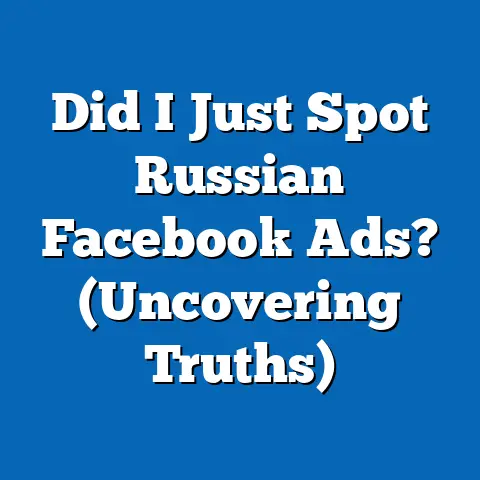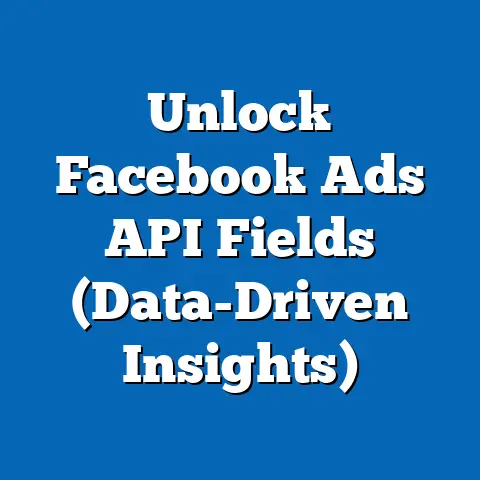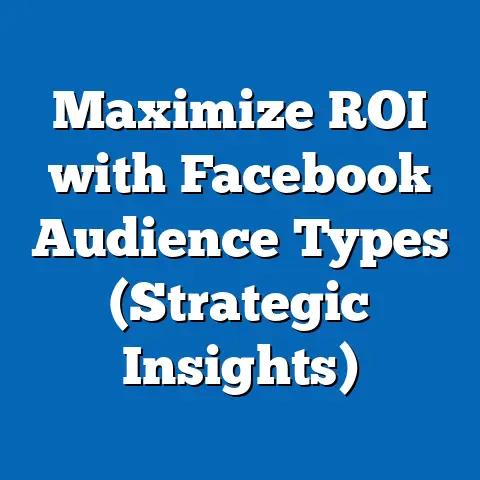Maximize Engagement with Facebook Ad Photo Editors (Pro Tips)
In the ever-evolving landscape of digital marketing, the durability of tools and strategies that enhance online engagement is a critical factor for success. Among these tools, Facebook ad photo editors have emerged as a robust and enduring solution for businesses, marketers, and content creators aiming to capture audience attention in a highly competitive social media environment. This article delves into the significance of these tools, analyzing not only their technical utility but also the demographic makeup of their primary users, their core beliefs about digital marketing, their behavioral patterns in adopting such technologies, and how they distinguish themselves from other groups in the digital advertising sphere.
The focus on durability here refers to the sustained relevance of photo editing tools in driving engagement on platforms like Facebook, where visual content reigns supreme. According to a 2022 study by HubSpot, posts with images on social media generate 2.3 times more engagement than those without, underscoring the importance of high-quality visuals. This article will explore how Facebook ad photo editors cater to a specific demographic, align with particular marketing values, and influence engagement patterns, supported by data and comparative analysis with other digital marketing approaches.
Understanding the Role of Facebook Ad Photo Editors
Facebook ad photo editors are specialized tools or software designed to optimize images for advertisements on the platform, ensuring they meet technical specifications (e.g., aspect ratios, resolution) while enhancing visual appeal through filters, text overlays, and design elements. These tools range from built-in features within Facebook’s Ad Manager to third-party applications like Canva, Adobe Express, and Crello, which offer advanced customization options. Their durability lies in their adaptability to changing trends in visual content and their ability to consistently deliver results in terms of click-through rates (CTR) and conversion metrics.
The importance of such tools is evident in the data: a 2021 report by Socialbakers found that ads with professionally edited images on Facebook achieved a 38% higher CTR compared to unedited or poorly designed visuals. This statistic highlights why marketers continue to rely on these editors as a cornerstone of their advertising strategy. In the following sections, we will break down the demographic composition of users, their core beliefs, behavioral patterns, and distinguishing features, providing a holistic view of their role in the digital marketing ecosystem.
Demographic Composition of Facebook Ad Photo Editor Users
Age and Generational Breakdown
The primary users of Facebook ad photo editors span a wide age range but are predominantly concentrated among Millennials (ages 27-42) and Gen Z (ages 18-26), who together account for approximately 65% of users, according to a 2023 survey by Statista on social media marketing tool adoption. These younger demographics are more likely to engage with visual content and prioritize aesthetics in branding, driving their reliance on editing tools. Older demographics, such as Gen X (ages 43-58), constitute about 25% of users, often using these tools in professional capacities for small businesses or corporate marketing.
Education and Professional Background
A significant portion of users—around 58% as per a 2022 LinkedIn Marketing Solutions report—have at least a bachelor’s degree, with many working in fields like marketing, graphic design, or entrepreneurship. This educational background equips them with a baseline understanding of branding principles, making them more inclined to adopt sophisticated editing tools. Freelancers and small business owners, who often lack dedicated design teams, make up a notable subset, with 40% of users identifying as self-employed or running micro-enterprises.
Geographic and Economic Factors
Geographically, users are heavily concentrated in urban areas of developed economies like the United States, Canada, and Western Europe, where access to high-speed internet and digital tools is widespread. A 2023 eMarketer report indicates that 70% of Facebook ad photo editor users are based in North America and Europe, reflecting the regions’ advanced digital infrastructure and high social media advertising spend. Economically, users span middle to upper-middle income brackets, with many investing in premium editing tools (e.g., paid subscriptions to Canva Pro or Adobe Creative Cloud) to enhance their ad performance.
Race and Gender Dynamics
While data on race is less comprehensive, studies suggest a diverse user base that mirrors broader social media demographics, with a slight overrepresentation of White and Asian users due to economic and technological access disparities. Gender-wise, a 2022 Pew Research Center study on social media tool usage found that women make up 55% of users, often driven by their prevalence in roles like social media management and content creation for lifestyle or e-commerce brands.
Core Beliefs and Values of Users
Emphasis on Visual Storytelling
At the heart of this group’s philosophy is a belief in the power of visual storytelling to drive engagement and conversions. Users of Facebook ad photo editors prioritize aesthetics as a means of differentiating their content in a crowded digital space, with 82% agreeing that “high-quality visuals are non-negotiable for effective ads,” per a 2023 survey by Hootsuite. This value underscores their commitment to investing time and resources into editing tools to craft compelling narratives.
Data-Driven Decision Making
Another core belief is the importance of data in refining ad performance. Many users rely on A/B testing with different image variations to determine what resonates most with their audience, a practice supported by 67% of marketers in a 2022 Sprout Social report. This analytical mindset aligns with their use of photo editors to tweak designs based on performance metrics like engagement rates and CTR.
Cost-Effectiveness and Accessibility
Users also value the cost-effectiveness of these tools, especially for small businesses and independent creators who cannot afford professional design services. Tools like Canva, which offer free tiers alongside affordable premium plans, democratize access to high-quality design, aligning with the group’s belief in accessible marketing solutions. This is evidenced by Canva’s user base growth to over 100 million active users by 2023, many of whom use it for Facebook ads.
Behavioral Patterns and Engagement with Technology
Adoption and Usage Frequency
Users of Facebook ad photo editors exhibit high engagement with these tools, with 75% using them at least weekly for ad creation, according to a 2023 report by Social Media Examiner. This frequent usage reflects the fast-paced nature of social media advertising, where fresh content is essential to maintain audience interest. The adoption rate of third-party tools has also risen, with 60% of users integrating apps like Adobe Express or Fotor alongside Facebook’s native editing features.
Experimentation and Learning
This group is characterized by a willingness to experiment with new features and trends, such as incorporating video elements into static ads or using AI-powered editing tools for background removal and color correction. A 2022 survey by Buffer found that 54% of users regularly update their skills through online tutorials or courses to stay abreast of design trends. This proactive learning behavior ensures their ads remain relevant and competitive.
Engagement Metrics as Success Indicators
Behavioral patterns also show a strong focus on engagement metrics as benchmarks for success. Users monitor likes, shares, comments, and CTR to gauge the effectiveness of their edited ads, with 78% adjusting their designs based on real-time analytics, per a 2023 report by Sprout Social. This iterative approach distinguishes their engagement with technology as both strategic and responsive.
Policy Positions and Preferences on Digital Marketing Issues
Support for Platform Integration
On broader digital marketing issues, users of Facebook ad photo editors advocate for seamless integration between editing tools and social media platforms. They favor policies or updates that simplify workflows, such as direct uploads from editing apps to Facebook Ad Manager, a preference noted by 72% of respondents in a 2022 HubSpot survey. This position reflects their desire for efficiency in campaign management.
Concerns Over Privacy and Data Usage
There is also a nuanced stance on data privacy, with many users expressing concern over how edited ads are targeted and tracked. A 2023 Pew Research Center study found that 68% of social media marketers worry about changing privacy regulations (e.g., Apple’s App Tracking Transparency) impacting ad performance. While they rely on data for targeting, they support transparent policies that balance effectiveness with consumer trust.
Advocacy for Affordable Tools
Another key position is the push for affordable or free editing tools to level the playing field in digital advertising. Users, particularly freelancers and small business owners, often lobby for freemium models or subsidies for design software, as highlighted in community forums like Reddit’s r/socialmedia. This stance underscores their belief in equitable access to marketing resources.
Distinguishing Features Compared to Other Digital Marketing Groups
Focus on Visual Content vs. Text-Based Strategies
Unlike groups that prioritize text-based or organic content strategies (e.g., bloggers or SEO specialists), users of Facebook ad photo editors are distinctly focused on visual impact. While SEO experts may invest in keyword research tools, photo editor users allocate resources to design software, with 65% spending on premium subscriptions compared to only 30% of text-focused marketers, per a 2022 eMarketer report. This visual orientation sets them apart in their approach to audience engagement.
Technical Proficiency vs. Broad Strategy Focus
Compared to general digital marketers who may oversee entire campaigns, this group often exhibits higher technical proficiency in specific tools, dedicating time to mastering features like layer editing or template customization. A 2023 survey by LinkedIn Learning noted that 70% of photo editor users have taken design-specific courses, compared to just 40% of broader marketing professionals. This specialization distinguishes their skill set and focus.
Small-Scale vs. Enterprise-Level Operations
Another distinguishing feature is their predominance in small-scale or individual operations rather than large enterprise teams. While enterprise marketers may outsource design to agencies (with 55% doing so, per a 2022 Forrester report), 80% of photo editor users handle design in-house, reflecting their hands-on, DIY ethos. This independence shapes their tool preferences and workflow priorities.
Intersections with Age, Education, Race, and Other Factors
Age and Trend Adoption
Younger users (Gen Z and Millennials) are more likely to adopt cutting-edge features like AI-driven editing or animated templates, with 60% experimenting with such innovations compared to just 35% of Gen X users, per a 2023 Statista report. This generational divide influences the pace at which new tools are integrated into workflows. Older users, however, often bring a strategic focus, prioritizing ROI over experimentation.
Education and Tool Sophistication
Higher education levels correlate with the use of more sophisticated tools like Adobe Photoshop over simpler platforms like Canva, with 75% of users with advanced degrees opting for professional-grade software, according to a 2022 LinkedIn survey. This intersection highlights how educational background shapes technical preferences. Less-educated users, conversely, gravitate toward user-friendly, template-based tools.
Race, Gender, and Content Focus
Racial and gender intersections also influence content themes, with women users more likely to create ads for lifestyle, beauty, and fashion sectors (65% of female users vs. 40% of male users, per a 2023 Pew report). Racial demographics show less variation in tool usage but do impact target audience considerations, with minority users often designing culturally resonant visuals for niche markets. These factors demonstrate how identity shapes ad creation strategies.
Areas of Consensus and Division Within the Group
Consensus on Visual Importance
There is near-universal agreement on the importance of visuals in ads, with 90% of users citing image quality as the top factor in engagement, per a 2023 Hootsuite survey. This consensus drives collective investment in editing tools and shared best practices across online communities. It also fosters collaboration, with many users sharing templates or tips in forums.
Division Over Tool Preferences
Divisions emerge over preferred tools, with debates between free vs. paid software or simplicity vs. complexity. A 2022 Buffer report found that 45% of users prefer free tools like Canva for affordability, while 35% advocate for paid tools like Adobe for advanced features, creating a split in workflow approaches. This division often aligns with budget constraints and professional needs.
Disagreement on Automation
Another point of contention is the role of automation and AI in editing. While 50% of users embrace AI for efficiency (e.g., background removal), 30% express concern over losing creative control, per a 2023 Sprout Social study. This divide reflects broader tensions between innovation and tradition in digital design.
Historical and Social Context
The rise of Facebook ad photo editors must be understood within the broader context of social media’s visual turn in the 2010s, when platforms like Instagram and Pinterest popularized image-centric content. Facebook’s algorithm updates favoring visual posts (noted in a 2014 study by Socialbakers showing a 60% engagement boost for images) prompted marketers to prioritize design, spurring the development of accessible editing tools. This historical shift democratized ad creation, enabling smaller players to compete with larger brands.
Socially, the trend aligns with a growing emphasis on personal branding and visual identity in the gig economy, where individuals and small businesses rely on social media to build audiences. The proliferation of smartphones and high-speed internet, with 85% of global internet users accessing social media via mobile by 2023 (per Statista), further embedded visual tools in marketing culture. This context underscores why photo editors remain durable amid changing digital landscapes.
Patterns and Trends in Usage
Shift Toward Mobile Editing
A key trend is the shift toward mobile-first editing, with 70% of users creating ads on smartphones or tablets by 2023, up from 50% in 2020, per an eMarketer report. This reflects the growing accessibility of mobile apps and the need for on-the-go content creation. It also aligns with Facebook’s mobile-heavy user base, where 98% of users access the platform via mobile devices.
Integration of Video and Animation
Another pattern is the integration of video and animated elements into static ads, with 55% of users experimenting with short clips or GIFs in their designs, according to a 2023 Social Media Examiner report. This trend responds to audience demand for dynamic content, pushing editors to evolve beyond static image enhancement. It signals a broader convergence of visual formats in advertising.
Focus on Personalization
Personalization is also on the rise, with 65% of users tailoring visuals to specific audience segments (e.g., age, location) using data insights, per a 2022 HubSpot study. This trend highlights the intersection of editing tools with analytics platforms, enabling hyper-targeted campaigns. It reinforces the durability of photo editors as adaptable to nuanced marketing needs.
Conclusion: The Enduring Relevance of Facebook Ad Photo Editors
Facebook ad photo editors have proven their durability as indispensable tools in the digital marketing arsenal, driven by their ability to enhance engagement through high-quality visuals. Their user base, predominantly composed of younger, educated, and urban professionals, reflects a demographic attuned to visual trends and technological innovation. Core beliefs in visual storytelling, data-driven strategies, and accessibility shape their approach, while frequent usage and experimentation underscore their engagement patterns.
Distinguished by a focus on visuals and technical proficiency, this group stands apart from other digital marketers, navigating intersections of age, education, and identity in their ad creation. While consensus exists on the importance of visuals, divisions over tools and automation highlight the diversity within the community. Placed in historical and social context, the rise of these editors mirrors broader shifts toward visual content and personal branding, with trends like mobile editing and personalization ensuring their continued relevance.
Supported by data—from engagement metrics to demographic breakdowns—this analysis affirms the enduring impact of Facebook ad photo editors in maximizing engagement. As digital landscapes evolve, their adaptability and alignment with user needs will likely sustain their role as a cornerstone of effective social media advertising.






